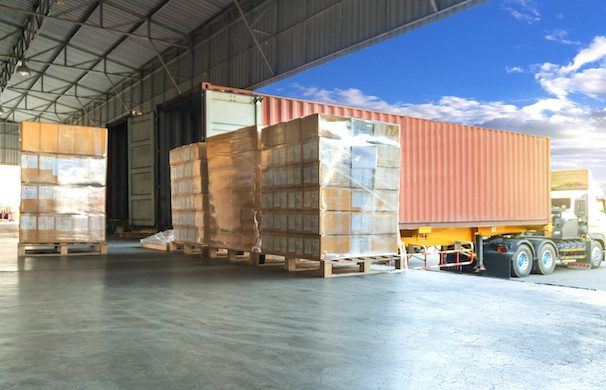Before making a killing on the showroom floor, businesses need to learn the ins and outs of how to ship to a trade show. Streamlining the logistics for your trade show program is half the battle, allowing you to take advantage of time-saving efficiencies and avoid rush shipping charges. Getting your valuable assets to the show floor undamaged and on time enables you to—quite literally—set the stage for success.
When it comes to handling freight, learning through trial and error can be an incredibly costly experience. Our experts have over 3 decades of industry knowledge to share. We’ll cover the basics of how to ship to a trade show, where and when to send your freight to and from events, the different carrier options available to you, and some other important tips to keep in mind along the way.
If just thinking about these logistics makes your head spin, Cardinal Expo will manage all shipping, installation, deconstruction, warehousing, and more for any of our exhibit rentals. Contact us today or keep reading to learn more.
Table of Contents:
- What Should You Ship to a Trade Show?
- When, Where, and How to Ship to a Trade Show
- Important Shipping Tips
- Shipping Freight Back After a Trade Show
- International Trade Show Shipping
- Shipping Methods and Costs
- Never Worry About How to Ship to a Trade Show Again with Cardinal
What Should You Ship to a Trade Show?
You’ll need more than just your trade show booth to deliver a compelling, engaging exhibit. Below you’ll find an overview of items to ship:
- Main exhibit elements
- Carpet and flooring
- Booth furniture
- Lighting fixtures
- Electronics
- Giveaways
- Printed materials
- Product samples
Having the proper supplementary materials to showcase your offerings while keeping visitors comfortable, interested, and engaged is a crucial part of the exhibiting experience. Figuring out how to get these items safely on site is the next important step.
When, Where, and How to Ship to a Trade Show
Once you have outlined all the necessary components involved in your display (whether your booth is rented or bought), you’ll be better able to assess the best course of action for shipping and handling. Think about when you’ll receive different items, what you want to ship together and what needs to go sooner, how valuable or fragile these items are, and where they should be shipped.
The when and where are tightly intertwined, and you’ll likely be deciding between two options: shipping to an advance warehouse or shipping directly to the event site. Each has its merits, but you will often find that one or the other is more suited to your business’ needs—or you may need to use a combination of both.
Shipping to an Advance Warehouse
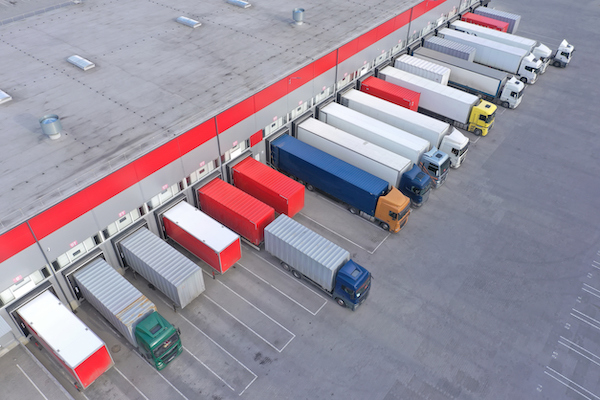
For those new to exhibiting who are just learning how to ship to a trade show, an advance warehouse can play a crucial role in the weeks leading up to the big event. Advance warehouses usually open around 25 days before the show and close a week prior. At the warehouse, the general contractor or decorator will provide the freight service.
Advance warehouses are located in proximity to the venue and offer a larger window for the shipment to arrive. This means that slower (and generally less expensive) carrier options may be used in transport, such as LTL trucking, FedEx, or UPS. Once the carrier provides notice of the freight’s delivery, it’s a good idea to contact the decorator at the warehouse to confirm both that the shipment has been received and the number of pieces included in it. If there are any discrepancies, you’ll have some time to address them before the show starts.
One disadvantage to cheaper shipping methods is the consequent increase in handling, which could mean more potential damages or delays. LTL (less than truckload shipping), for instance, moves and offloads freight through different depots, trucks, and cities, which increases the risk of a piece going missing or incurring damage. After the shipment arrives at the advance warehouse, freight will need to be handled yet again to get it off the truck, and then once more to get it onto the showroom floor. For this reason, it’s a good idea to choose safer, more expensive shipping methods for any assets that are highly valuable, fragile, lightly packed, uncrated, or time sensitive.
Shipping Directly to the Event Site
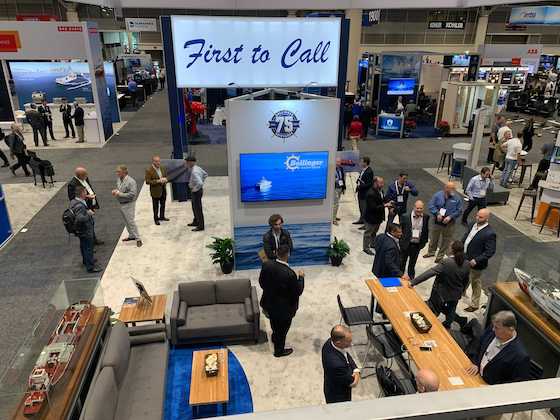
You may decide you’d rather cut out the advance warehouse altogether and ship directly to the event site. Unfortunately, this places some constraints on your available shipping window. You’ll likely have anywhere from a week to as little as 1–3 days before the show to schedule your delivery.
Moreover, within this smaller time frame, you’ll have to ensure that your shipment arrives within business hours. During business hours, different exhibitors or locations on the show floor may be further restricted to specific “target dates,” meaning anything that arrives outside specified times could be turned away or charged a surcharge for being handled off-target.
Another thing to keep in mind when shipping directly to the site is the long delays your carrier may experience after check-in. The narrow delivery window can cause long lines on site, and your driver may need to wait hours—maybe even overnight—before unloading. This can seriously limit the time available to your crew for setting up. Shipping to an advance warehouse can minimize these sorts of delays.
Because this constricted shipping interval is more complicated to navigate, you’ll need to choose a freight carrier that can successfully and reliably deliver to the event site on time. One such option is hiring a dedicated trucking service, making you the only customer with freight on that truck. They will be able to pick up your shipment and go directly to the event, reducing the risk of both delays and damages.
You can technically ship LTL to the show site as well. While it does get the job done, you’ll have to be very careful about your timing, be comfortable with potential delays or damage, and stay on top of shipment tracking so you can immediately make other arrangements if complications arise.
Other Shipping Alternatives
Take priority and cost into account when determining how to ship to a trade show. You can always choose to split up your freight and send portions of it to the advance warehouse and others to the show site, or send some via LTL and some direct. Just keep in mind that by introducing extra variables, you’re also giving yourself extra responsibilities when it comes to tracking and logistics management.
Choose your shipping method wisely. If you have a one-of-a-kind piece, you won’t want to ship it via FedEx. Instead, use a dedicated carrier or courier service. If you have a lot of different shipments, funnel them all directly to Cardinal Expo, where we can act as an intermediary.
Because your items may arrive at different times, we can provide warehousing for items as they arrive until everything is ready to be shipped for the show. We take inventory and photograph every step in the process to help keep you informed, ensure that everything is accounted for, and put you at ease.
Important Shipping Tips
Play It Safe for Greater ROI
Even though it may be tempting to cut costs by using cheaper shipping options, it’s generally not worth the risk. If there’s a chance that your exhibit or performance could suffer by way of damaged or lost merchandise, then you should reconsider and go with a more premium freight service.
Paying a few hundred dollars extra on shipping is nothing compared to your exhibit, product samples, or other critical components arriving broken—or worse, not arriving at all. In our experience, the financial burden of loss or delay could end up being 10 times as much as the initial investment on better shipping services.
Request Documentation Throughout the Shipping Process

Your shipped materials will likely include a variety of individual components, often dispensed at different times and sometimes from different vendors as well. When keeping track of inventory, documentation is key. Not only should you document your items once they arrive at their final destination, but you’ll want to have your freight photographed every step of the way, both coming and going.
The best practice involves requesting photos of the inventory itself, as well as any manifests, shipping labels, and receipts. These photos are instrumental in deciphering what might be damaged or missing from your shipment. You’ll also need proper documentation in order to place any kind of insurance claims for lost or damaged items.
Shipping Freight Back After a Trade Show
After the trade show concludes, you’ll need to get your assets back to your home base or wherever they are stored between events. Making a comprehensive plan for return transport before the event begins is key to getting the best pricing and avoiding chaotic bottlenecks.
Preparations Before the Show
Before the show begins, you’ll want to handle a few logistics:
- First, you’ll want to arrange a shipper. Provide them with the pickup date and time, pickup location, your booth number, and a list of the pieces to recover. Connect them with the show site decorator as well in case they have any questions or encounter any issues.
- You may also want to request and fill out a bill of lading before the show. This can help to avoid long lines of other exhibitors at on-site service centers directly after the event. The bill of lading or material handling agreement grants permission for the on-site decorator to take your belongings and release them to the trucking service you’ve hired.
What to Do After the Show
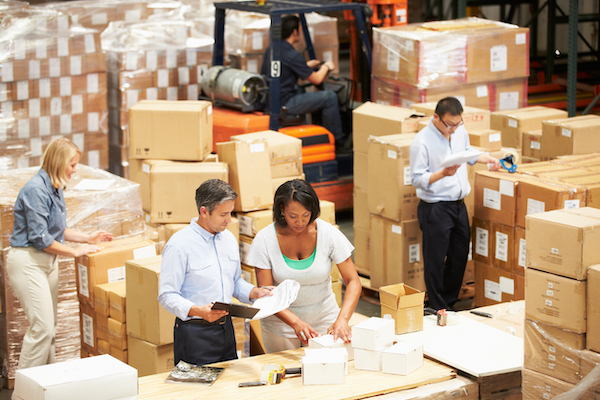
After the show, be sure to have your on-site team handle the following:
- Pack all of your materials.
- Clearly label everything with shipping labels.
- Update the material handling agreement accordingly.
- Take photographs of everything before it is sent off.
If you’re using your own carrier, they’ll have to wait in line to collect your shipment. Inform the carrier that they are picking up trade show freight and there is a potential for long detention time. All-day waits are not uncommon in this industry.
Another option is to ship off the show floor. You can contract the decorator to move your freight by going to the service desk at the event and asking them to be your carrier.
The show site carrier is typically more expensive, and you have less control over when the shipment arrives and how it is transported. This is because your freight will likely be moved using the cheapest option (usually LTL) rather than more premium services. While you may risk damage and delays, you won’t have to worry about the logistics of using an offsite vendor and long pick-up wait times.
International Trade Show Shipping
Taking your exhibits overseas? If you’re wondering how to ship to a trade show internationally, here are our top pieces of advice:
- Source your components in-country. Renting your booth in the same country as the trade show will help you cut shipping costs and expedite the set-up process. The same goes for your hired crew, who will likely have a better understanding of the processes and rules if they are local to the area. It’s also always cheaper to hire workers who reside nearby than to be responsible for their transportation and accommodations.
- Allow for flexible timing. Expect any necessary importation to be slower than domestic shipping. Flexible time frames also give your business the liberty to fix or replace assets that get damaged or lost during shipping.
- Do your research and cultivate trusted partners. Exhibiting abroad necessitates ample research upfront, especially when it comes to different tariffs, bans, and border laws as they pertain to your inventory. Make sure you partner with trusted exhibit rental companies, like Cardinal Expo, who can guarantee a consistent degree of professionalism throughout a protracted international process.
- Ship to the advance warehouse early on. Planning so that your shipment arrives to the advance warehouse toward the front end of the warehouse’s opening window is crucial because of the potential for long delays at customs. After paying tens or even hundreds of thousands of dollars to exhibit, it’s simply not worth the risk that your products are held up beyond your reach. You could also potentially ship to your exhibit house and then have them ship to the advance warehouse or the show site itself on your behalf. Just remember that time is absolutely of the essence. If you’re shipping internationally to the United States, Cardinal Expo is happy to receive early shipments, provide warehousing, and handle shipping your items to the event.
- Have multiple copies of your custom forms. Shipments that pass through customs are required to have documents pre-attached to them detailing their contents and respective values. Before the show begins and prior to the show closing, work with a customs broker or international shipper to compile these documents and keep them up to date for both inbound and outbound transport. Without these documents, you risk delays or potentially being unable to ship your items at all. With so much riding on your shipments arriving on time, make multiple copies of these forms to keep on hand.
For more information, read our “How to Handle International Trade Show Shipping” blog post.
Shipping Methods and Costs
Carriers and Couriers for Small Shipments

Whether you’re shipping internationally or domestically, there are a few major carriers you’ll likely be working with throughout the process. While FedEx and UPS can be used for low-value items with extended delivery windows, other couriers can provide you with more control over the process and safeguard against lost, delayed, or damaged inventory.
For small shipments, couriers and commercial airlines like Southwest Cargo or Delta Cargo will help you forgo the risk of failure with comparable costs. They often prove less expensive than FedEx 2-day shipping, even for next-day or same-day services.
With these services, a courier or airline staff member will get your outgoing shipment to the airline. Then a courier, airline staff, or someone from your team will pick it up on the receiving end. This offers you 100% control over any package you might send. You can maintain direct contact with couriers and airlines to confirm the shipment’s movement end-to-end, highly mitigating the potential for lost or damaged goods.
While this necessitates more coordination between vendors—two couriers and an airline—a higher success rate is almost always worth it in the end. But you’ll have to be a known shipper with the TSA to use those commercial airlines—luckily, Cardinal Expo is here to handle that for you as well.
Charging by Weight and Size
Large carriers like LTL, FedEx, and UPS charge for shipments a few different ways: by pound weight or by dimensional weight (dim-weight), usually taking the greater of the two. For example, if something measures 2x2x2 feet but is relatively light, carriers determine how much that shipment detracts from the overall profitability of that space on their truck on average and will charge by dim-weight. Freight that is bulky, even if it is lightweight, takes up space that can’t otherwise be used, and it will cost you accordingly.
You can also consider hiring a dedicated truck, a carrier that hauls freight for you and you alone along a single route. Though it is usually more expensive, dedicated trucks give you more control over your final bill if you have a significant amount of inventory to move and plan far enough ahead. You can employ a freight broker to help organize this type of shipping or use Cardinal Expo as your broker.
Additional Shipping Costs
No matter where you send your shipments—whether to the advance warehouse or to the show site itself—receiving and unloading your materials poses additional costs. The decorator has jurisdiction over this part of the process and charges for material handling or drayage costs per pound upon receiving your materials. Before the shipment arrives, the decorator will likely provide you with one bill that covers both inbound and outbound handling.
Because of the per-pound drayage costs, pay close attention to the weight of your shipment. You may decide that you’d rather risk the extra handling and just pack your materials carefully with lots of protection to ship LTL. But this could significantly increase the weight of your shipment—up to hundreds of additional pounds in crating—meaning higher material handling costs.
In other words, sending something direct on a pallet may have a more competitive cost overall at the end of the day. At Cardinal Expo, we often choose to ship directly for that reason.
Never Worry About How to Ship to a Trade Show Again with Cardinal
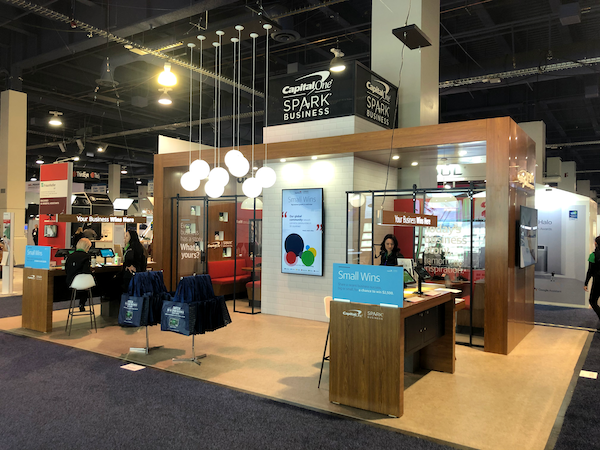
After examining the many hurdles and moving parts involved in how to ship to a trade show, you’ll understand that having a professional partner who handles these logistics can make all the difference. With over 30 years of insight into the trade show industry, Cardinal Expo is proud to offer incredibly efficient, professional, and reliable logistics and shipping services to clients across the country.
In addition to designing and fabricating exhibit rentals, our end-to-end turnkey services include shipment scheduling and tracking, on-site labor and supervision, exhibit installation and dismantling, and storage and inventory process management. We’ll keep your business updated throughout the process with ample documentation and step-by-step monitoring.
At Cardinal Expo, we’re proud to have established a professional reputation that prioritizes trust, customer service, and expertise. It’s our duty to handle your valuables with care, ensuring that you can focus all your valuable energy on making the next expo your best, wherever it may be.
Contact us below to start planning for your next trade show and beyond.
Contact Us Today
We at Cardinal Expo are here to answer any questions you may have, provide you with additional information, and create an effective solution for your exhibit needs.
"*" indicates required fields

